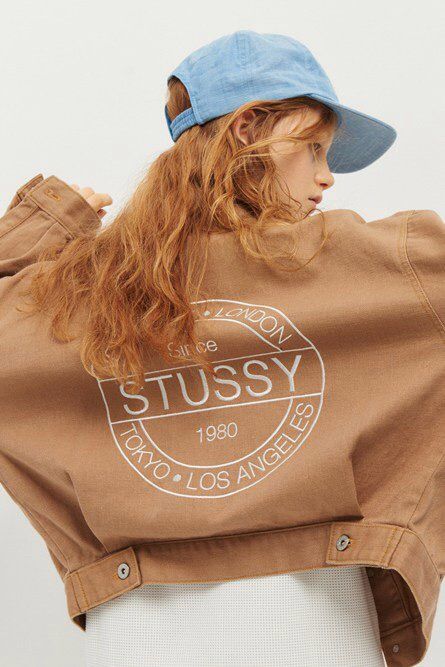When comparing prices of Official Stussy and Ralph Lauren trousers, several factors emerge clearly. Both brands have built reputations that influence their pricing within the global streetwear and luxury markets. Stussy trousers often reflect their urban skate origins with prices that appeal to younger audiences worldwide. Ralph Lauren, on the other hand, presents its trousers as premium lifestyle pieces emphasizing timeless American elegance. The price difference typically stems from fabric sourcing, production methods, and brand heritage. Consumers often weigh authenticity, durability, and craftsmanship before deciding between both renowned labels. Ultimately, each brand targets distinct customer expectations while maintaining strong market credibility.
Popular Trends in Official Stussy and Ralph Lauren Trousers
Popular trends in Official Stussy and Ralph Lauren trousers show how both brands evolve thoughtfully. Stussy embraces modern streetwear influences, integrating relaxed silhouettes and minimal felpa della stussy branding with seasonal variations. Ralph Lauren consistently leans toward classic tailoring while adapting to contemporary urban aesthetics over time. Both labels have responded to the growing demand for versatility and practicality in everyday wear. Neutral tones, loose fits, and subtle logos are defining current collections across multiple fashion markets. Social media has amplified these trends, with influencers and artists shaping style perceptions globally. As trends continue shifting, both brands balance innovation with their longstanding cultural identities successfully.
The Heritage and Evolution of Official Stussy Trousers
Official Stussy trousers trace their roots to Southern California’s surf and skate scenes during the 1980s. Founder Shawn Stussy introduced casual yet distinct silhouettes that challenged conventional ralph lauren tracksuit menswear boundaries effortlessly. Over decades, the brand’s trousers have reflected subcultural creativity combined with contemporary design refinement. Their evolution showcases a transition from underground streetwear to globally recognized lifestyle apparel. Each collection reveals experimentation with textures, patterns, and symbolic references from art and music. The label maintains authenticity by staying connected to its community-driven approach to design. Today, Stussy trousers symbolize cultural expression that bridges generational and geographical fashion influences fluidly.
Ralph Lauren’s Distinct Identity in Trouser Design
Ralph Lauren trousers represent a contrasting narrative built around elegance, heritage, and meticulous craftsmanship. Established in the late 1960s, the brand redefined American fashion through refined yet accessible luxury. Its trousers often feature tailored cuts reflecting Ivy League sophistication and timeless aesthetic sensibility. Each piece communicates Ralph Lauren’s dedication to creating garments that embody confidence and social refinement. The brand’s Polo and Purple Label collections highlight different interpretations of modern menswear traditions. Unlike streetwear-oriented labels, Ralph Lauren emphasizes classic structures suited for various formal occasions. Its trousers continue to influence both traditional and contemporary dressing standards across the fashion world.
Collaborations and Cultural Influence of Both Brands
Collaborations have played an essential role in expanding the cultural impact of both iconic labels. Stussy’s partnerships with Nike, Carhartt WIP, and Levi’s brought streetwear closer to global mainstream audiences. Ralph Lauren has also ventured into notable collaborations, merging its luxury vision with youthful creativity. These partnerships create trousers that blend authenticity, innovation, and diverse cultural storytelling effectively. Limited releases and exclusive drops drive excitement while maintaining each brand’s individual legacy intact. Through such collaborations, Stussy and Ralph Lauren strengthen their cross-generational appeal among fashion enthusiasts. The resulting designs not only sell products but also narrate evolving movements within modern apparel culture.
Quality of Colors Available for Felpa della Stuss and Ralph Lauren Tracksuit
Examining the quality of colors available for Felpa della Stuss and Ralph Lauren tracksuits reveals intricate design consideration. Stussy frequently experiments with muted tones, earth shades, and vintage-inspired washes for its trousers. Ralph Lauren, meanwhile, prioritizes deep hues such as navy, khaki, and charcoal for refined versatility. Both labels emphasize consistent dye processes ensuring uniformity and durability throughout repeated wear cycles. The attention to color reflects brand identity and emotional resonance within contemporary wardrobe selections. Collectors often identify specific seasonal colorways that later become highly sought-after pieces. These chromatic strategies ensure that visual harmony remains central to each brand’s trouser lineup.
Market Presence and Consumer Appeal
Official Stussy and Ralph Lauren trousers command strong visibility within their respective consumer segments globally. Stussy appeals to youth-oriented audiences valuing authenticity, individuality, and urban community representation. Ralph Lauren resonates with consumers seeking timeless sophistication and established social prestige through fashion. Each brand sustains its identity by nurturing customer loyalty through consistent design philosophy. Retail collaborations, digital campaigns, and selective distribution enhance visibility in global fashion markets. Both brands demonstrate resilience through economic shifts and evolving consumer preferences over time. Their trousers remain symbols of cultural expression shaped by distinct creative and historical foundations.
Sustainability and the Future of Trouser Production
Sustainability increasingly defines the future of both Official Stussy and Ralph Lauren trouser production. Stussy has begun incorporating eco-conscious materials and local sourcing into selected seasonal collections. Ralph Lauren similarly advances sustainable goals through recycled fibers and responsible manufacturing practices. These efforts align with the fashion industry’s broader shift toward transparency and reduced environmental impact. Both brands acknowledge the growing consumer demand for ethically made, long-lasting apparel pieces. As innovation continues, sustainability will likely become central to their design evolution strategies. The trousers of tomorrow may reflect not just style, but shared responsibility toward global preservation.
